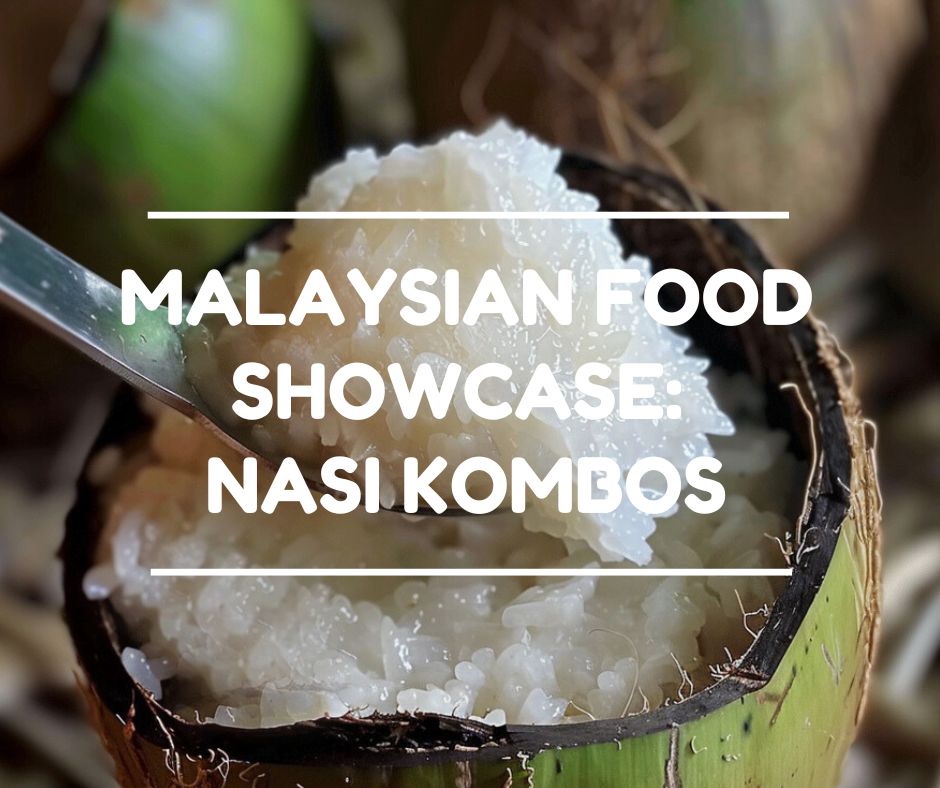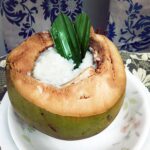Nasi Kombos: Traditional Lotud Coconut Rice Dish from Sabah
Nasi Kombos is a traditional rice dish that comes from Sabah, specifically from the Lotud community, a sub-group of the Dusun people. This simple yet delicious dish combines glutinous rice with fresh coconut, making it a go-to comfort food in the West Coast region of Sabah. The rice is cooked with young coconut water, and after it’s done, they mix it with the flesh of a young coconut, giving the dish a natural sweetness and a sticky, hearty texture. Traditionally, Nasi Kombos is served in a hollowed-out coconut shell, which not only looks cool but also adds to the authenticity.
This dish has been a staple in Lotud households, especially around Tuaran and Kota Kinabalu. It’s often made for family meals rather than big ceremonies, which shows how it’s rooted in everyday life rather than in grand celebrations. One thing to note is that Nasi Kombos shouldn’t be confused with the Kombos from Kota Belud, which is a fermented sweet rice, wrapped in yam leaves. While both dishes share the same name, the Lotud version is all about that rich coconut flavour, while the one from Kota Belud is more of a sweet, tapai-style rice.
Making Nasi Kombos is pretty straightforward and doesn’t require many ingredients. All you need is some glutinous rice, fresh coconut water, grated coconut flesh, and a bit of salt. First, the rice is washed and cooked with the coconut water, which gives it a subtle sweetness. Once it’s done, grated coconut and salt are mixed in, making the rice soft yet slightly chewy, with a perfect balance of sweet and salty. Traditionally, the rice is served in a coconut shell, but if you can’t find one, you could always use a bowl (though it won’t have that same charm). Although this dish is usually served warm, it can be enjoyed cold as a dessert too due to its sweet coconut flavours.
Some modern versions of Nasi Kombos add their own twist, like steaming the rice inside a coconut shell for extra aroma, or mixing white/brown/palm sugar into the coconut for a sweeter touch. But whether you stick to the original or try out a new version, the core flavours of coconut and rice remain the highlight of the dish.
If you’re in Sabah, especially around the west coast, you might get lucky and find this dish at local food stalls or during cultural festivals. In recent years, tourists and even locals outside the Lotud community have started to appreciate the simple goodness of Nasi Kombos. It’s a dish that showcases how something so basic, like coconut and rice, can bring out rich and satisfying flavours.





